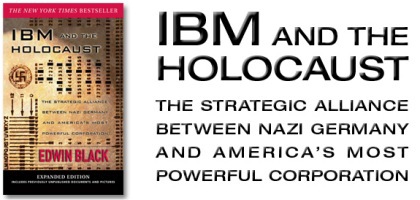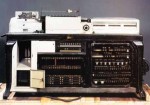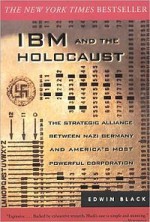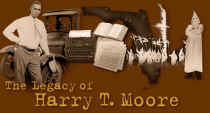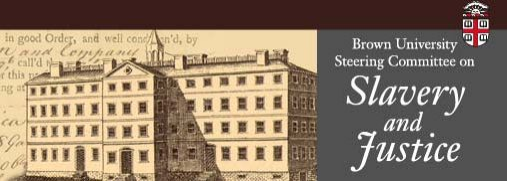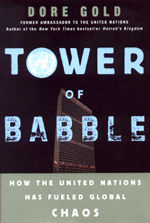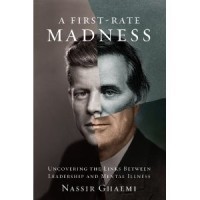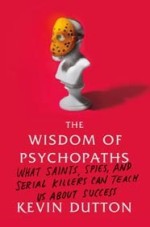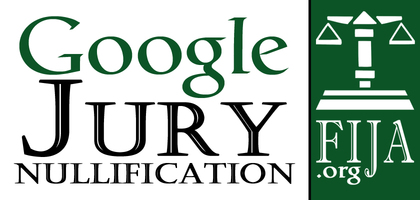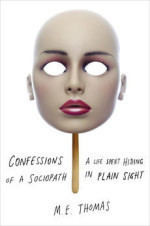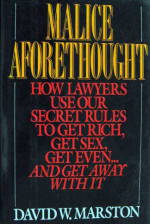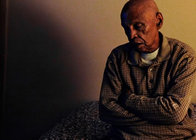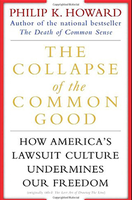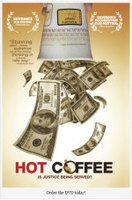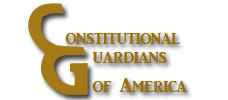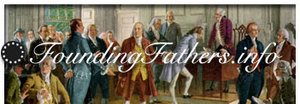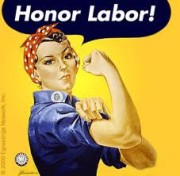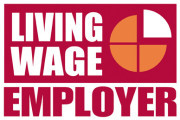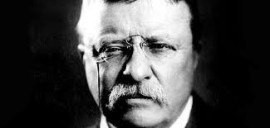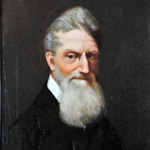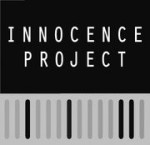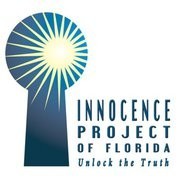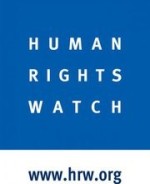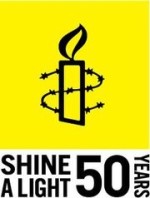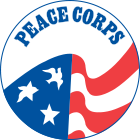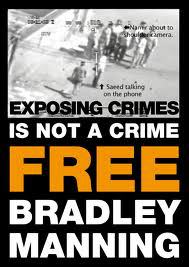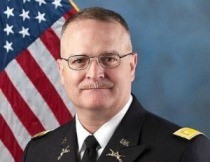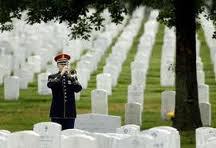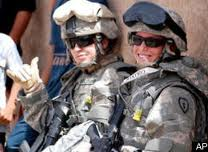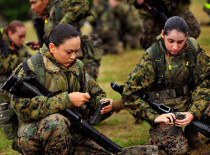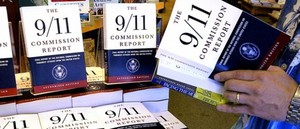IBM and The Holocaust
- Link to IBM and the Holocaust
- Link to the tabulating machine
- Link to the Korherr Report
- Link to the Final Solution statistical report
IBM's Role in the Holocaust -- What the New Documents Reveal
Huffington Post
by Edwin Black
February 27, 2012
Newly-released documents expose more explicitly the details of IBM's pivotal role in the Holocaust -- all six phases: identification, expulsion from society, confiscation, ghettoization, deportation, and even extermination. Moreover, the documents portray with crystal clarity the personal involvement and micro-management of IBM president Thomas J. Watson in the company's co-planning and co-organizing of Hitler's campaign to destroy the Jews.
IBM's twelve-year alliance with the Third Reich was first revealed in my book IBM and the Holocaust, published simultaneously in 40 countries in February 2001. It was based on some 20,000 documents drawn from archives in seven countries. IBM never denied any of the information in the book; and despite thousands of media and communal requests, as well as published articles, the company has remained silent.
The new "expanded edition" contains 32 pages of never-before-published internal IBM correspondence, State Department and Justice Department memos, and concentration camp documents that graphically chronicle IBM's actions and what they knew during the 12-year Hitler regime. On the anniversary of the release of the original book, the new edition was released on February 26, 2012 at a special live global streaming event at Yeshiva University's Furst Hall, sponsored by the American Association of Jewish Lawyers and Jurists together with a coalition of other groups.
Among the newly-released documents and archival materials are secret 1941 correspondence setting up the Dutch subsidiary of IBM to work in tandem with the Nazis, company President Thomas Watson's personal approval for the 1939 release of special IBM alphabetizing machines to help organize the rape of Poland and the deportation of Polish Jews, as well as the IBM Concentration Camp Codes including IBM's code for death by Gas Chamber. Among the newly published photos of the punch cards is the one developed for the statistician who reported directly to Himmler and Eichmann.
The significance of the incriminating documents requires context.
Punch cards, also called Hollerith cards after IBM founder Herman Hollerith, were the forerunner of the computers that IBM is famous for today. These cards stored information in holes punched in the rows and columns, which were then "read" by a tabulating machine. The system worked like a player piano -- but this one was devoted to the devil's music. First designed to track people and organize a census, the Hollerith system was later adapted to any tabulation or information task.
From the first moments of the Hitler regime in 1933, IBM used its exclusive punch card technology and its global monopoly on information technology to organize, systematize, and accelerate Hitler's anti-Jewish program, step by step facilitating the tightening noose. The punch cards, machinery, training, servicing, and special project work, such as population census and identification, was managed directly by IBM headquarters in New York, and later through its subsidiaries in Germany, known as Deutsche Hollerith-Maschinen Gesellschaft (DEHOMAG), Poland, Holland, France, Switzerland, and other European countries.
Among the punch cards published are two for the SS, including one for the SS Rassenamt, or Race Office, which specialized in racial selections and coordinated with many other Reich offices. A third card was custom-crafted by IBM for Richard Korherr, a top Nazi statistician and expert in Jewish demographics who reported directly to Reichsführer Heinrich Himmler and who also worked with Adolf Eichmann. Himmler and Eichmann were architects of the extermination phase of the Holocaust. All three punch cards bear the proud indicia of IBM's German subsidiary, DEHOMAG. They illustrate the nature of the end users who relied upon IBM's information technology.
In 1937, with war looming and the world shocked at the increasingly merciless Nazi persecution of the Jews, Hitler bestowed upon Watson a special award -- created specifically for the occasion -- to honor extraordinary service by a foreigner to the Third Reich. The medal, the Order of the German Eagle with Star, bedecked with swastikas, was to be worn on a sash over the heart. Watson returned the medal years later in June 1940 as a reaction to public outrage about the medal during the bombing of Paris. The return of this medal has been used by IBM apologists to show Watson had second thoughts about his alliance with the Reich. But a newly released copy of a subsequent letter dated June 10, 1941, drafted by IBM's New York office, confirms that IBM headquarters personally directed the activities of its Dutch subsidiary set up in 1940 to identify and liquidate the Jews of Holland. Hence, while IBM engaged in the public relations maneuver of returning the medal, the company was actually quietly expanding its role in Hitler's Holocaust. Similar subsidiaries, sometimes named as a variant of "Watson Business Machines," were set up in Poland, Vichy France, and elsewhere on the Continent in cadence with the Nazi takeover of Europe.
Particularly powerful are the newly-released copies of the IBM concentration camp codes. IBM maintained a customer site, known as the Hollerith Department, in virtually every concentration camp to sort or process punch cards and track prisoners. The codes show IBM's numerical designation for various camps. Auschwitz was 001, Buchenwald was 002; Dachau was 003, and so on. Various prisoner types were reduced to IBM numbers, with 3 signifying homosexual, 9 for anti-social, and 12 for Gypsy. The IBM number 8 designated a Jew. Inmate death was also reduced to an IBM digit: 3 represented death by natural causes, 4 by execution, 5 by suicide, and code 6 designated "special treatment" in gas chambers. IBM engineers had to create Hollerith codes to differentiate between a Jew who had been worked to death and one who had been gassed, then print the cards, configure the machines, train the staff, and continuously maintain the fragile systems every two weeks on site in the concentration camps.
Newly-released photographs show the Hollerith Bunker at Dachau. It housed at least two dozen machines, mainly controlled by the SS. The foreboding concrete Hollerith blockhouse, constructed of reinforced concrete and steel, was designed to withstand the most intense Allied aerial bombardment. Those familiar with Nazi bomb-proof shelters will recognize the advanced square-cornered pillbox design reserved for the Reich's most precious buildings and operations. IBM equipment was among the Reich's most important weapons, not only in its war against the Jews, but in its general military campaigns and control of railway traffic. Watson personally approved expenditures to add bomb shelters to DEHOMAG installations because the cost was born by the company. Such costs cut into IBM's profit margin. Watson's approval was required because he received a one-percent commission on all Nazi business profits.
Two telling U.S. government memos, now published, are remarkable for their telling irony. The first is a State Department memo, dated December 3, 1941, just four days before the attack on Pearl Harbor and as the Nazis were being openly accused of genocide in Europe. On that day in 1941, IBM's top attorney, Harrison Chauncey, visited the State Department to express qualms about the company's extensive involvement with Hitler. The State Department memo recorded that Chauncey feared "that his company may some day be blamed for cooperating with the Germans."
The second is a Justice Department memo generated during a federal investigation of IBM for trading with the enemy. Economic Warfare Section chief investigator Howard J. Carter prepared the memo for his supervisors describing the company's collusion with the Hitler regime. Carter wrote: "What Hitler has done to us through his economic warfare, one of our own American corporations has also done ... Hence IBM is in a class with the Nazis." He ended his memo: "The entire world citizenry is hampered by an international monster."
At a time when the Watson name and the IBM image is being laundered by whiz computers that can answer questions on TV game shows, it is important to remember that Thomas Watson and his corporate behemoth were guilty of genocide. The Treaty on Genocide, Article 2, defines genocide as "acts committed with intent to destroy, in whole or in part, a national, ethnical, racial, or religious group." In Article 3, the treaty states that among the "acts [that] shall be punishable," are the ones in subsection (e), that is "complicity in genocide." As for who shall be punished, the Treaty specifies the perpetrators in Article 4: "Persons committing genocide or any of the other acts enumerated in Article 3 shall be punished, whether they are constitutionally responsible rulers, public officials, or private individuals."
International Business Machines, and its president Thomas J. Watson, committed genocide by any standard. It was never about the antisemitism. It was never about the National Socialism. It was always about the money. Business was their middle name. Read more
Edwin Black is the author of IBM and the Holocaust, The Strategic Alliance Between Nazi Germany and America's Most Powerful Corporation, newly released in the Expanded Edition.
Follow Edwin Black on Twitter: www.twitter.com/EdwinBlackBook
IBM's Role in the Holocaust -- What the [...]
Adobe Acrobat document [56.6 KB]
jewishvirtuallibrary.org-The Nazi Party,[...]
Adobe Acrobat document [179.7 KB]
Final Solution Statistical Report (Engli[...]
Adobe Acrobat document [78.1 KB]
IBM and the Holocaust website
Author Edwin Black website
IBM and the Holocaust Facebook
IBM and the Holocaust
Jewish Virtual Library
IBM and the Holocaust Good Reads
How IBM Helped Automate the Nazi Death Machine in Poland Final Solutions, THE VILLAGE VOICE, by Edwin Black
IBM and the Holocaust
Wikipedia
IBM and the Holocaust is a book by investigative journalist Edwin Black which details the business dealings of the American-based multinational corporation International
Business Machines (IBM) and its German and other European subsidiaries with the government of Adolf Hitler during the 1930s and the years of World War II. In the book, Black outlines the way in which
IBM's technology helped facilitate Nazi genocide against the Jewish people through generation and tabulation of punch cards based upon national census data...
…"Mankind barely noticed when the concept of massively organized information quietly emerged to become a means of social control, a weapon of war, and a roadmap
for group destruction.... Hitler and his hatred of the Jews was the ironic driving force behind this intellectual turning point. But his quest was greatly enhanced and energized by the ingenuity and
craving for profit of a single American company and its legendary, autocratic chairman. That company was International Business machines, and its chairman was Thomas J. Watson."
Read more
Revisiting The Horrors Of The Holocaust
60 Minutes CBS News
Scott Pelley reporting
February 11, 2009
This segment was originally broadcast on Dec. 17, 2006. It was updated on June 21, 2007.
For the first time, secrets of the Nazi Holocaust that have been hidden away for more than 60 years are finally being made available to the public. We're not talking about a missing filing cabinet - we're talking about thousands of filing cabinets, holding 50 million pages. It's Hitler's secret archive.
The Nazis were famous for record keeping but what 60 Minutes found ran from the bizarre to the horrifying. This Holocaust history was discovered by the Allies in dozens of concentration camps, as Germany fell in the spring of 1945.
As correspondent Scott Pelley reports, the documents were taken to a town in the middle of Germany, called Bad Arolsen, where they were sorted, filed and locked way, never to be seen by the public until now.
The storerooms are immense: 16 miles of shelves holding the stories of 17 million victims – not only Jews, but slave laborers, political prisoners and homosexuals. To open the files is to see the Holocaust staring back like it was yesterday: strange pink Gestapo arrest warrants as lethal as a death sentence, jewelry lost as freedom ended at the gates of an extermination camp. Time stopped here in 1945.
Pelley walked through the evidence with chief archivist Udo Jost. He showed 60 Minutes a list of 1,000 prisoners saved by a factory owner who told the Nazis he needed the prisoners labor. This was the list of Oskar Schindler, made famous by the Steven Spielberg movie.
"Here are the 700 men and the 300 women whose names were on Schindler's list," Jost explains.
The 60 Minutes team also found the file of "Frank, Annaliese Marie," better known as Anne Frank. It's her paper trail from Amsterdam to Bergen-Belsen, where she died at the age of 15.
But most of the names here are of unknown people. While the Nazis did not write down the names of those executed in the gas chambers at places like Auschwitz, they did keep detailed records of millions of others who died in the camps. Their names are listed in notebooks labeled "Totenbuch," which means "death book." The names are written here, single-spaced, in meticulous handwriting.
"Here we see the cause of death: executed. And you can see, every two minutes they shot one prisoner," Jost explains.
"So they shot a prisoner every two minutes for a little over an hour and a half?" Pelley asks.
"Yes. Now look at the date: it's the 20th of April. That was Adolf Hitler's birthday. And this was a birthday present, a gift for the Führer. That's the bureaucracy of the devil," Jost says.
The devil is in the details - the smallest details. Pelley and the 60 Minutes crew were amazed to see the Nazis kept records of head lice.
"You can see the names and numbers of each prisoner, and the amount of lice that were found," Jost says.
The Nazis couldn't have disease spreading among slave laborers. "You can see he was a perfectionist. He even put down the size of the lice. Large, small or medium-sized lice," Jost comments about the Nazi lice inspector.
Paul Shapiro helped pry open the archive. He's Director of Holocaust Studies of the U.S. Holocaust Memorial Museum in Washington D.C.
"I'm curious. Why did the Nazis keep all these records? If they were gonna murder these people anyway, why keep the paperwork?" Pelley asks.
"Because they wanted to show they were getting the job done. So, in terms of people whose destiny was to be murdered, recording how well that was being done was very important," Shapiro explains.
And those records make up the largest Holocaust archive anywhere. Run by the Red Cross, the International Tracing Service was set up after the war to trace lost family members. Survivors could write for information, but there was a backlog of 400,000 unanswered letters. And neither survivors nor scholars got past the lobby.
"What was the stated reason for keeping these documents out of the public eye for more than 60 years?" Pelley asks.
"A respect for privacy of individuals was the most-often cited reason," Shapiro says. "On the one hand, you had governments stating 'We're protecting people's privacy.' And on the other hand, you had those very people saying 'No, no, we want the material to be open.'"
But opening the archives has taken longer than expected. Although the process began 15 months ago, it won't be completed until next fall.
But 60 Minutes brought three men to Bad Arolsen for an advance look.
Walter Feiden, Miki Schwartz and Jack Rosenthal are the first Holocaust survivors ever in the archive.
Schwartz, of San Diego, was 14 when he watched his parents herded to the gas chambers at Auschwitz and then, later, was forced to sign himself in at Buchenwald.
Schwartz came across some documents bearing his handwriting.
60 Minutes asked the Red Cross to find all the documents for these three survivors. There were plenty of surprises, including a mysterious reprieve.
"This is a transport list for prisoners leaving Buchenwald and going to a camp called 'Dora,'" Pelley remarks. "You know what Dora was?"
"Yes," says Schwartz. "Some sort of a fabrication of armaments."
The arms fabricated at Dora were the V-1 and V-2 rockets that rained on London.
"And the story of that place is, hardly anybody got out of there alive. Look at your name. It's on the transport list to go there. And somebody's drawn a line straight through the middle of it. They took you off the list. Did you know until this moment that you were headed to Dora?" Pelley asks.
"No. Never, never, never, wow," Schwartz says. He had no idea why he was taken off the list. Of 50 people named, he was one of just two with a lifeline straight through his name.
"I'm sort of, yes I'm shaking. I'm scared right now," Schwartz says.
"Right now, it makes me think back, and I'm living like there is this 14-year-old youngster and they wanted to kill him," Schwartz says. "I don't know why, I did not ever do anything, any harm to anybody. I think I should have a middle name, my middle name to be Mr. Lucky."
Walter Feiden, of New York, was 13 and a prisoner in a Nazi ghetto, where both his parents died. Later, he too signed into Buchenwald.
Among the documents was the paper Feiden signed. "Hey, you're right. I had better handwriting then than I have now, but, yes," he remarks.
"Who was the boy who signed this card?" Pelley asks.
"A young, actually, teenager who had gone through a great deal, become less trusting of what's told to him. … But glad to be alive. You got to overcome it," Feiden says.
Asked what he has to overcome, Feiden tells Pelley, "The breaking down. Because that's one thing we never did in camp. We never wanted to break down in front of some of SS men, and give them the pleasure of seeing us breaking down."
"How do you stop yourself from breaking down?" Pelley asks.
"I chew my lips. Have you noticed that the lower lip…" Feiden explains. It's what he did in the camps. "Oh, yes and you have to swallow after that. That helps also," he adds.
A card carried his barracks number, "66." That number alone opened his memory. In Block 66, Feiden says a thousand people lived.
"Oh yeah, that's correct. That's correct. Oh, oh, my God, what just popped into my mind. Between each block there was a trough you could urinate in. And I can see it now: the block manager, whatever, felt that this person is just about dead. We put these near-dead people into that trough that other people urinated into, and let them die in those things. The brutality of it, you know?" Feiden recalls.
Jack Rosenthal, of New York, arrived with his family at Auschwitz. During the selection process after their arrival, Jack and his uncle were sent to a barracks while his mother and five sisters and brothers went straight to the gas chambers and the ovens.
"I remember that night," Rosenthal says. "There was a little window in the barracks where we were. He told me: 'Look out the window. What do you see?' and I said 'The sky is aflame.' The sky is burning, you know. You saw the flames licking the sky. The stench was terrible. You smelled burning flesh."
His family burned that night. Yet, incredibly, 60 Minutes found the Nazis had bothered to create a form to keep track of Jack's mail at Buchenwald.
"But as you can see, there are no records of letters. You didn't…" Pelley remarks.
"Who was gonna send me mail? I got news for you, if I would have died in Buchenwald, nobody would ever shed a tear for me, because my, my whole family was wiped out before then. We were a family of eight. And I'm the sole survivor."
American soldiers liberated Jack in 1945. On a personal effects card that he had signed at Buchenwald, there was reference to a number: A11832.
Asked if he's seen that number before, Jack tells Pelley "I see it every time. You wanna see it?"
A11832 is the inmate number the Nazis tattooed on Jack's arm. "It's there. And when I die, they shouldn't cover up my arm. They should keep it like this, because when the good Lord will see this, I hope he's gonna put me front row, center. Because I deserve it," he says.
These men were first to see their documents, but the Bad Arolsen archive is being digitally scanned, to be distributed to research centers. Other survivors may yet discover unknown history still waiting to be written.
Asked if he's glad he looked back at the documents, Miki Schwartz tells Pelley, "Definitely. I feel like I learned about me, at least, what happened and specifically what I'm glad about, for those people who said the Holocaust didn't happen, like the president of Iran. If they have any questions about it, please come to Bad Arolsen and check it out for themselves." Read more
Produced By Michael Rosenbaum

